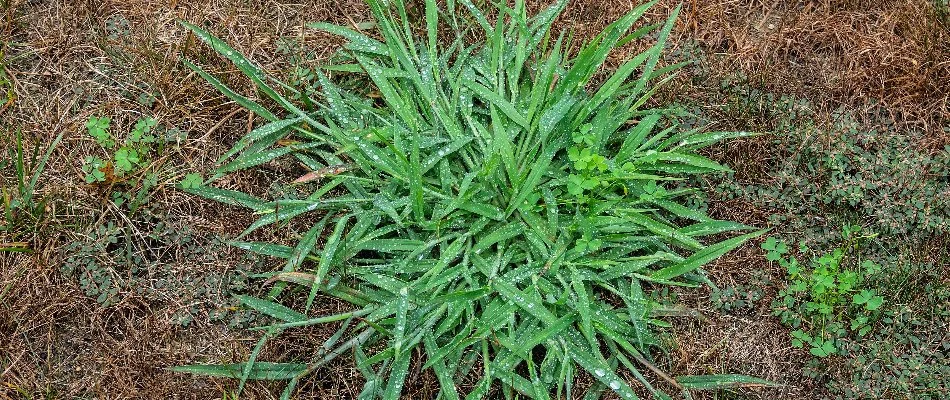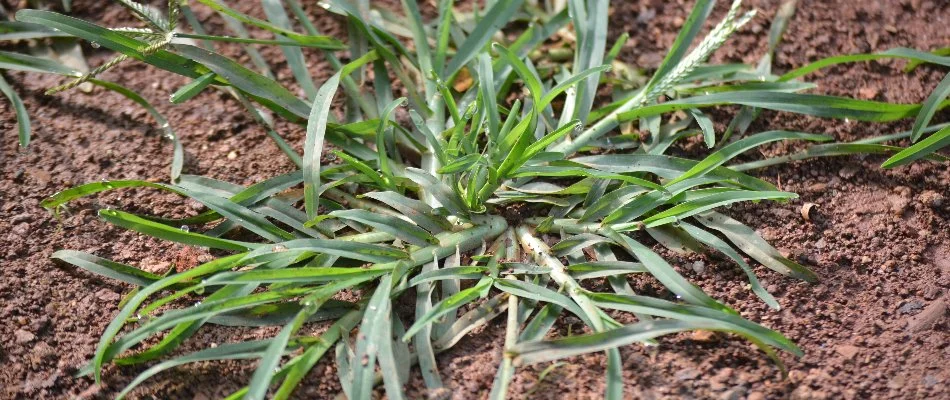When it comes to maintaining a pristine lawn, two of the most notorious adversaries homeowners in Florida face are crabgrass and goosegrass. These pesky weeds can quickly take over your green spaces, turning a well-manicured lawn into a frustrating eyesore. Crabgrass is a low-growing weed with distinct seed heads and grows well in sunny and open areas. It has a fibrous root system, which makes it difficult to tackle. Meanwhile, goosegrass has flat leaves that grow in a rosette pattern. This weed thrives in compacted soil as well. If your lawn has been taken over by weeds, it's best to hire professionals to eliminate them. Lawn care experts will properly identify the weeds and apply an effective curative treatment to get rid of these invasive plants from your turf.
What does crabgrass look like?

Crabgrass is a warm-season annual weed that thrives in sunny, open areas and is one of the most common unwelcome guests in lawns. This weed stands out with its coarse texture and loose, sprawling growth habit, often resembling an open crab's claw—hence the name. Crabgrass leaves are typically light green and have a wider blade compared to most desirable turfgrass species. One of the telltale signs of crabgrass is its seed heads, which form a finger-like arrangement. These seed heads can produce thousands of seeds per plant, allowing crabgrass to spread rapidly if not dealt with.
Aside from the prolific spread of crabgrass through seeds, another reason why this weed is tough to control is because of its root system. Crabgrass weeds have a fibrous root system that spreads out from the base of the weed. These roots can even reach up to 12 inches deep.
What does goosegrass look like?

Goosegrass, another formidable lawn invader, differs in appearance but can be just as problematic. It is a summer annual that thrives in compacted soil and often populates heavily trafficked areas where other grasses may struggle to survive. Visually, goosegrass is characterized by its flat, prostrate growth habit, forming a rosette that hugs the ground closely. Its leaves are darker and shinier than those of crabgrass, with a distinctive folded shape. The seeds of goosegrass appear in a unique zipper-like arrangement on multiple spikes, setting it apart from other weeds.
Goosegrass is often mistaken for crabgrass due to superficial similarities, but recognizing the differences is essential for applying the correct treatment. Goosegrass's tenacity, especially in harsh conditions, makes it a stubborn opponent in any lawn care regimen. Once established, this weed is difficult to control, so it's important to take action as soon as you notice it on your lawn.
Hire lawn care professionals to tackle crabgrass and goosegrass on your lawn.
Partnering with professional lawn care experts offers a highly effective strategy against crabgrass and goosegrass. Professionals accurately identify and target these weeds with specialized treatments, ensuring they are effectively managed. With access to advanced herbicides and knowledge of precise application techniques, experts implement effective and reliable strategies that keep weeds from taking over your turf. By entrusting your lawn to professionals, you save valuable time and effort, allowing you to enjoy a beautiful, weed-free outdoor space without the burden of constant maintenance.
Give us a call to enroll in our weed control service.
If you're looking for a company you can trust to protect your lawn from weeds like crabgrass and goosegrass, look no further than our professionals at Leafy Landscapes! We offer a weed control service that includes both pre- and post-emergent weed control treatments to keep weeds like crabgrass and goosegrass away from your lawn. We offer this service to residential properties in and around New Smyrna Beach, Port Orange, and Ponce Inlet, FL. Call us today at (386) 492-8862 to enroll!



Comments (0)
Thanks for your comment!
Thanks for your feedback! Your comments have been successfully submitted! Please note, all comments require admin approval prior to display.
Error submitting comment!
There is a problem with your comment, please see below and try again.